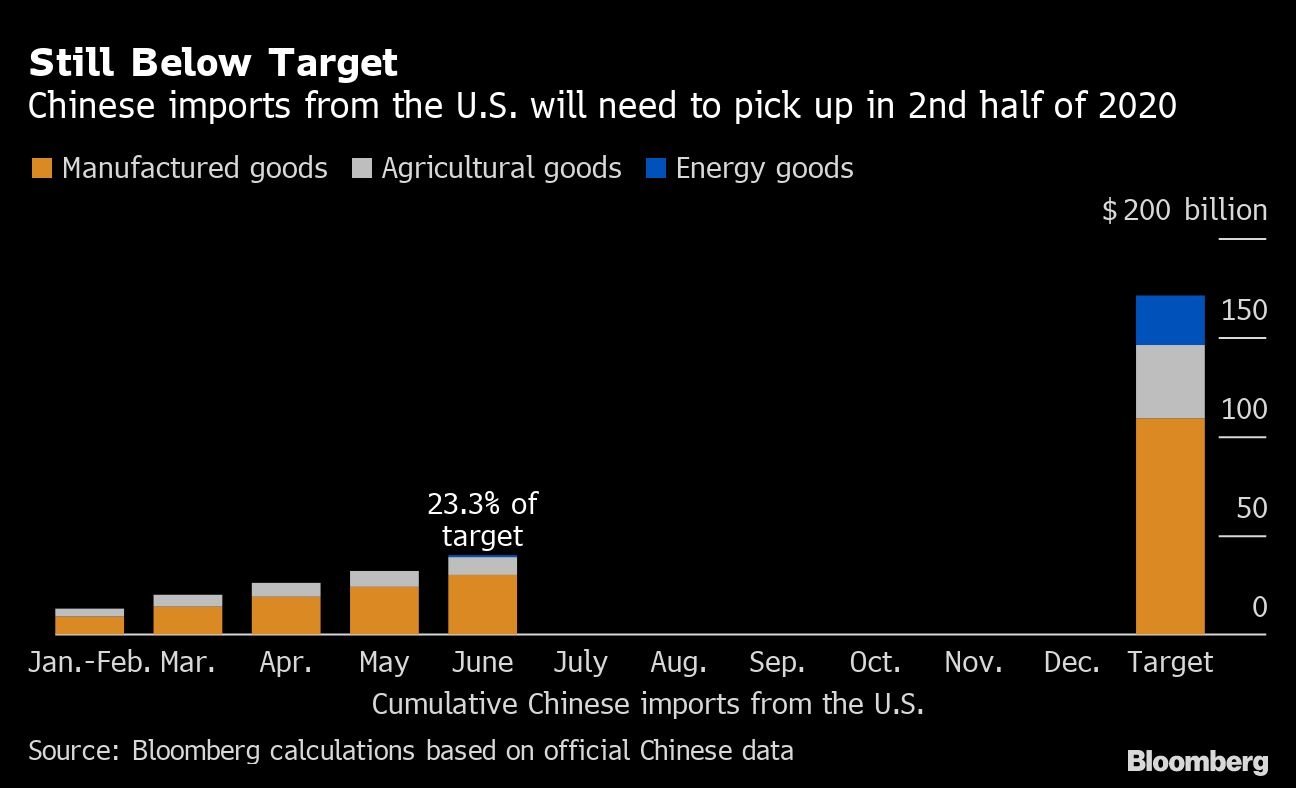Jul 27, 2020
China buying American but not enough to hit trade deal target
Bloomberg News
Why the U.S.-China relationship could go from bad to worse
China continues to lag behind the pace of imports from the U.S. needed to meet the terms of the two nations’ trade deal, amid a rapidly worsening diplomatic standoff that’s sparking global fears of a new Cold War.
By the end of the first half of this year, China had bought about 23 per cent of the total purchase target of more than US$170 billion for goods in 2020, according to Bloomberg calculations based on Chinese Customs Administration data. That has quickened on a month-over-month basis from May’s 19 per cent marker, but it means China needs to buy about US$130 billion in the remainder of the year to comply with the agreement signed in January.

China has promised to purchase an additional US$200 billion of U.S. goods and services over the 2017 level by the end of 2021. The agreement paused a bruising trade war between the world’s two largest economies caused in part by the Trump administration’s concerns over the size of the U.S. trade deficit with China. The coronavirus outbreak and the first-quarter contraction in China’s economy set back progress toward achieving the target.
The deal remains one of the key anchor points between Beijing and Washington at a time of tit-for-tat accusations of spying, consulate closures and official U.S. rhetoric that calls securing freedom from the Chinese Communist Party as “the mission of our time.”
Observers are worried that even this agreement could become a victim of the worsening relationship, but China is still increasing purchases. Imports of manufactured goods took the lead in June, with vehicles, pharmaceutical products, optical and medical instruments all seeing big jumps. Purchases of integrated circuits remained above $1 billion.
While purchases of energy products are only at about five per cent of where they need to be by year-end, imports of coal in June more than doubled from the average of previous months, reaching the highest this year.
Shipments of agricultural products also increased despite some slowdown in soybean and pork imports. Purchase of cereals more than tripled in June from May. The trend will probably continue in July as China made two massive purchases of American corn in July, according to a U.S. Department of Agriculture statement.
“We of course hope that the deal reached can be implemented in earnest. China has always honored its words, and we will implement the agreement,” Hua Chunying, spokeswoman at the Ministry of Foreign Affairs said at a press conference on July 16, when asked about China’s stance on the phase-one deal.
The phase-one agreement says that official data from both China and the U.S. will be used to determine whether promises have been met.


